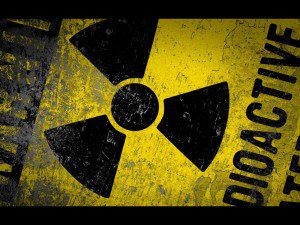Contributing Writer for Wake Up World
The American government has developed a solution for all the excess radioactive metal from the medical industry and military: Make it into belt buckles. Or forks. Even cheese graters are fair game. The stainless steel beverage cups used to avoid the dangers of BPA? Those are threatened with radioactivity as well.
In an absurd twist of policy, The United States Department of Energy decided in December 2012 that it might be a good idea to revoke the ban on recycling radioactive material. The logic behind the proposed reversal is this: If you have a waste product that is costly to contain and dangerous, quietly offload it onto the unsuspecting masses in the form of consumer goods and building materials while turning a nice profit throughout.
[pro_ad_display_adzone id=”110028″]
More Radiation Please
Just in case Americans do not have enough exposure to radiation as it is, the Department of Energy would like to give the population another dose in the form of radioactive surgical implants, bicycles, jewelry, zippers or common household goods like pots, pans and utensils. If the department is successful, 14,000 tons of contaminated metal will make its way into the mainstream fabrication industry, generating a tidy $10-40 million in revenue while avoiding exorbitant disposal fees.
If the ban is lifted, it would also open a floodgate for contaminated metals to enter the U.S. from abroad with little or no oversight.
Unfortunately, radioactive products are nothing new in America. Take for example the Bed, Bath & Beyond tissue holder debacle. The product was recalled from 200 stores in 20 states due to contamination of cobalt-60. Then there was the radioactive cheese grater that gave off the equivalent radiation of a chest X-ray for every 36 hours of exposure. And La-Z-Boy recliners fitted with cobalt-60 contaminated brackets. The chairs would have bathed their owners in a chest X-ray’s worth of radiation for every 1,000 hours of use if they had not been discovered before release from the warehouse.
This is just the tip of the iceberg. Conservative estimates from the U.S. Government Accountability Office state that over 500,000 contaminated metal objects are still unaccounted for in the U.S., with 18,740 documented cases of radioactive consumer goods.
The Surprising Health Risks of Handbags and Elevators
A majority of radioactive consumer products and building materials originate from India and China, with a smaller portion emerging from former Soviet Bloc countries and Africa. Incredibly, the Netherlands found 500 handbags from India to be radioactive due to contaminated decorative rings whereas France and Sweden uncovered 500 tainted elevator buttons.
These instances are not a minor issue — exposure to radioactive materials cause dire health consequences. In Taiwan, a study of 6,000 Taiwanese between 1983 to 2005 discovered that those who lived in flats built with radioactive reinforcing steel had significantly higher rates of leukemia and breast cancer. Likewise, Indian scrap metal workers have died from handling contaminated metal. Cobalt-60 (or any radioactive material for that matter) is certainly not an element we want in our household products, clothing or building materials if we would like to remain healthy and disease free.
“Nothing has changed since 2000 that would justify lifting its current ban. Rather, just the opposite: since then the National Academy of Sciences has acknowledged that there is no safe level of radiation exposure, and we’ve learned that women are even more vulnerable to radiation than men, while children have long been known to be more vulnerable than adults,” said the Nuclear Information and Resource Service in response to the proposed radioactive metal recycling plan.
Sources for this article include:
Please note: this article was first published on Natural News.
[pro_ad_display_adzone id=”110025″]
[pro_ad_display_adzone id=”110027″]







